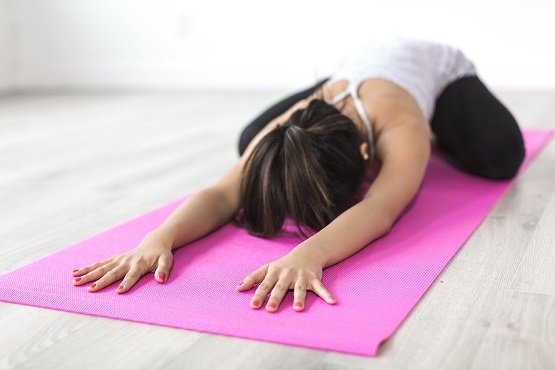Introduction
When you exercise, your body needs to be able to quickly recover from stress and injuries. One of the best ways to do this is by increasing your flexibility. This is especially important if you are an older adult who wants to prevent falls or sustain injuries from them. When it comes to increasing flexibility, there are several things that you can do at home to avoid injury.

Doing Pilates at Home
Pilates is a form of exercise that focuses on strengthening the core muscles. It is a low-impact exercise that can be done at home, or even in your office if you have a mat and some floor space with home pilates equipment. The exercises in pilates help to improve posture and balance, as well as flexibility in joints and muscles. Pilates is particularly useful for those who want to get back into shape after giving birth or an injury because it does not involve heavy weights or strain on joints.
You can incorporate pilates into your daily routine by doing some repetitions every few hours during the day (e.g., while watching TV). You might also find it helpful to set aside time each day specifically for practicing pilates exercises so that they become part of your routine rather than just something new you add occasionally when you feel like it
Vinyasa Yoga
Vinyasa or Vinyasa flow yoga is a dynamic flow style of yoga that uses synchronized breathing and movement. Vinyasa is a great way to increase flexibility and strength, especially if you’re not flexible, to begin with. The synchrony between breath and movement helps improve your mood, relieve stress, and increase energy levels—all things that will help you in your daily life.
Perform Exercises with Your Hands, Wrists, and Arms
To improve the strength of your hands, wrists, and arms, perform exercises that involve these body parts. Examples of such exercises include:
- Wrist curls: Stand with a dumbbell in each hand, palms facing forward. Rest your forearms on a bench with your elbows bent 90 degrees. Lift the weights toward your shoulders by flexing your wrist back as far as possible while keeping the rest of your arm relaxed.
- Wrist extensions: Sit with legs stretched out in front of you and hold a dumbbell in each hand at shoulder height (elbows bent 90 degrees out to each side). Slowly raise both weights to eye level so that they are parallel to the floor then lower them to starting position again while keeping them straight throughout the movement. Perform three sets of 10 repetitions each day for optimal results within weeks.
It is important not only to have proper form when performing these exercises but also to make sure that both hands are equally strong so that one does not get overworked while another remains weak due to lack of use.
Exercise Your Back and Abdominal Muscles
The core is a group of muscles located in the lower back and abdominal area that provides stability and support for the body’s movements. When these muscles are strong, they can protect you from injuries to your back and spine. A strong core also helps improve your posture, which can decrease pain caused by poor posture as well as prevent problems later on down the road.
To strengthen your core:
- Do exercises that focus on strengthening these muscles so they’ll be better able to withstand movement without straining or injuring themselves;
- Try to do some form of aerobic exercise at least three times per week (for example, walking briskly);
- Lift weights or use resistance bands several times per week;
Stretch Your Legs
Bend your legs and stretch your arms over your head. Hold this position for 10 seconds, then relax for 5 seconds before repeating three times for a total of 30 seconds of stretching time per side (left leg, right arm; right leg, left arm). You should feel the stretch in the upper part of your thigh muscles as well as in your calf muscles on either side of each leg. Stretching helps you relax and reduce stress by increasing blood flow throughout your body while improving muscle tone and range of motion in joints such as knees, ankles, and hips which can become stiff when we sit all day at work or watch TV at home after work.
Maintain a healthy diet to support exercise recovery.
In addition to exercise, you’ll need to make sure that you’re eating a balanced diet and getting enough sleep. Getting the proper amount of nutrients is crucial for supporting your body’s recovery from exercise.
A healthy diet should include a balance of carbohydrates, proteins, and fats. You don’t have to follow an exact plan as long as you’re eating fruits and veggies, lean meat or fish, dairy products (if applicable), whole grains, and nuts/seeds/legumes regularly then you’re on the right track.
It’s also important not to overdo it with certain foods like sugar or caffeine since these can affect energy levels negatively. If possible try not using alcohol as well since it has been linked with an increased risk of injury while exercising (especially heavy drinking).
Conclusion
Increasing your body strength and flexibility is important to staying healthy and feeling good about yourself. It’s also a great way to prevent injury, as well as improve your overall quality of life. The key is finding activities that work for you, whether it’s yoga or Pilates, or something else together.




